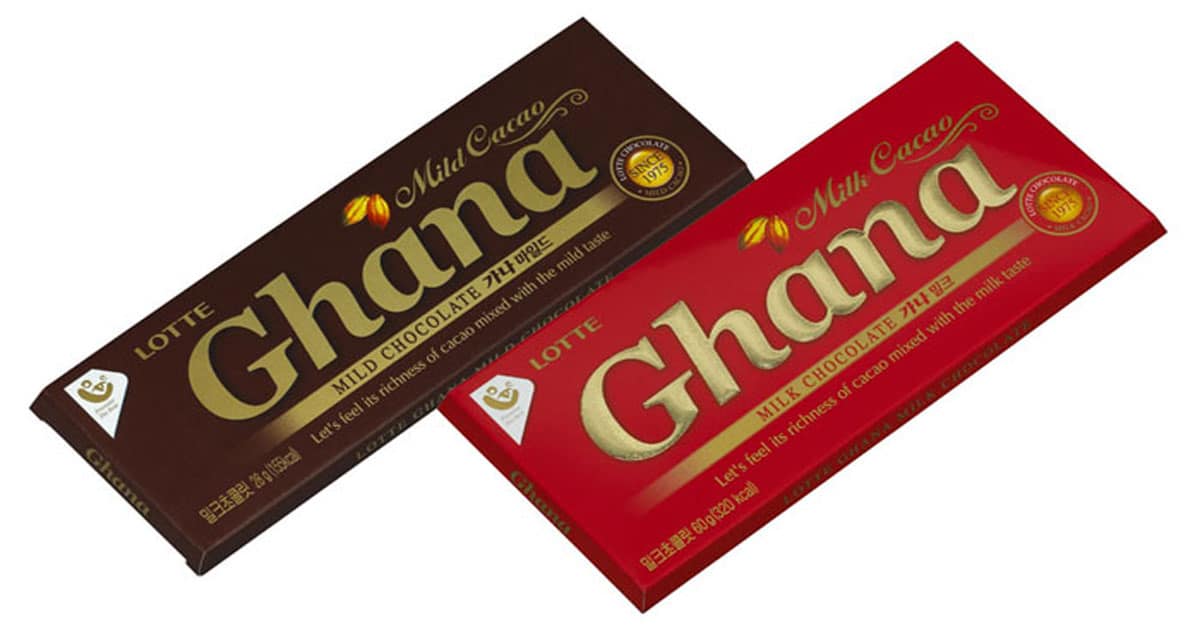Ghana Chocolate (History, Marketing & Commercials)
Ghana Chocolate is a brand that hails from Korea and is owned by Lotte confectionery, and it has been operating since 1964. Operations were expanded to South Korea in 1975, and today, this is one of the most well-known chocolate brands in Korea and Japan. The name of the Ghana chocolate bar is meant as a reference to Ghana, which is one of the world’s largest exporters of cocoa beans.
The brand is often confused with Ghana, the place, but in Korea, most people would know that you meant the chocolate bar if you brought up this name. The long and sometimes sordid history to do with Ghana and cocoa beans has not diminished people’s love of this chocolate bar. If you have never tried Ghana chocolate, you might have to order some so that you can see what all the hype is about in Korea.
Please leave a review or any memories of this snack in the comments at the bottom of this page. Thank you!
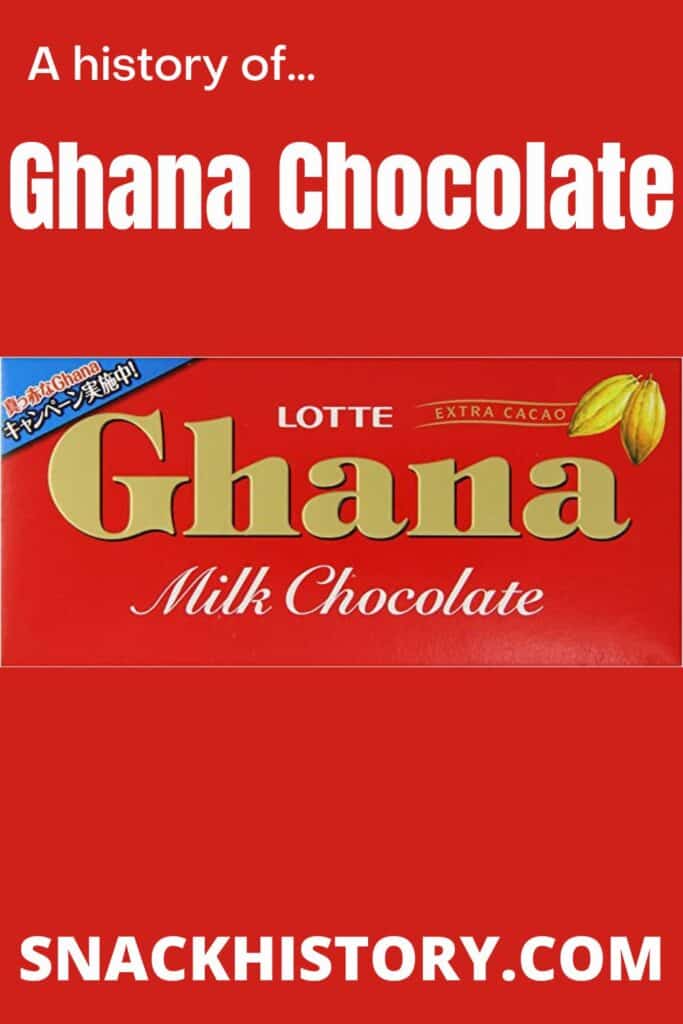
History
To know about Ghana Chocolate Company, you need to know some more about how Ghana is connected with the cocoa trade. The company sources its materials from this country, and it has even named its product after the cocoa, which originates in Ghana itself. It is thought by many that the cocoa that is produced in Ghana is some of the best in the world, which is probably why the Ghana chocolate company has chosen to bring in their raw materials from the Ghana growing region.
Ghana’s cocoa trade is often more connected with cocoa, the drink, but cocoa beans are also used in the manufacture of many raw or organic chocolate bars that are sold on the market today. The Spanish actually began large-scale cultivation of cocoa in the 16th century, which was the beginning of the use of Ghana’s farming and production largely for this purpose. The Dutch expanded their own trading into Ghana in the 1800s and planted their own cocoa-growing crops.
Different varieties of cocoa have been brought to Ghana by different trading groups over the years. These other varieties of cocoa have helped to influence the unique variety of raw materials that can be collected and exported to other places from Ghana. Today there are seven cocoa-growing regions in Ghana, and these seven regions provide most of the raw materials for chocolate and related products to other parts of the world.
Lotte began its life as a small company that sold a limited number of sweets, but adding chocolates to its product list has made all the difference in the company’s success over the years. The company was opened in 1948, and as chocolate products became increasingly in demand in the Japanese and Korean marketplace, Lotte was poised to take advantage of this shift.
The first Lotte chocolates were called Kana Choco, and they were sold in two varieties, the Ghana Milk Choco-Roll and the Ghana Mild Choco-Roll. These products were successful enough to get the company on its way to making more chocolate bar products. The Ghana Chocolate Bar is actually the first chocolate bar product that the company has ever made, and it continues to be the only chocolate bar product in the stable for the company.
Lotte has recently begun selling internationally, which speaks for the popularity of the Ghana Chocolate bar and what it has done for the visibility of the company itself. Since the company started out selling chewing gum and small, hard candies, it is easy to see just how much the addition of chocolate products to its lineup has improved its prospects and business success.
Ghana chocolates are sold everywhere in Japan and Korea and are also easily purchased through online sellers. If you are not located in Japan or Korea, you will still be able to order a box of these candy bars to be sent to you if you want to give them a try. As production and sales expand to new markets, you might one day be able to buy Ghana Chocolate Bars locally as well!
Lotte further cemented their status as a quality chocolate creator when it began using the BTC (Best Taste and Color of the Chocolate) method to make its products. This is one of the best ways to make sure that the taste and the texture of every batch of candy is consistent. Only the best candy makers use this system to produce their products, and Lotte has joined them in order to be certain of the quality and the taste of every candy bar that they sell to consumers.
The Ghana chocolate bar that is sold in Korea is known for its creamy texture and its excellent flavor. In Japan, Ghana chocolate is manufactured by Lotte and uses a different recipe than other production regions use. In Japan, the bars are made with cocoa butter through the micro grind method. This process is not used in other markets, so you might have a different taste and texture experience if you get this chocolate in Japan. The Japanese candy bar is more likely to remind you of Swiss chocolate. Some experts have even said that the Japanese Ghana Chocolate Bar is just as good, if not better than Swiss chocolates.
The Ghana chocolate company has distinctive delivery for its candy products, and they have elected not to change the spelling of the candy bar to a translated version of the name. Each candy bar is stamped with the Ghana brand name spelled exactly as it would be if you were referring to the place. Each unique variety has its own colorful wrapping with classic gold lettering and simple white cursive, which indicates which flavor is within the package. This is a very classic design that is easily recognizable as being related to a candy product or a chocolate product in nearly any market.
Ghana chocolate has also leaned heavily on the endorsement of famous people to help promote their Candy products. Endorsement is much more common in Japanese and Korean markets for all products than it is in other countries, but Ghana chocolate has actually collected a fairly impressive list of celebrity endorsers to help get their chocolate bars attention.
One of the first major endorsers of the product was actor Park Bo-Gum, but there are other notable people who have endorsed the product publicly, such as Lee Mi-yeon, Miwa Yoshida, Ei Morisako, IU, and Amerado. This is a very abbreviated list of all of the well-known promoters of the brand, and this clever marketing tactic has been very good for Ghana Chocolate’s reputation and visibility.
Another reason that these candy products are so well-known in Japan and Korea is because they are relatively low fat and have fairly low sugar content. While sweets are very popular in Korea and Japan, being a healthy weight is very important as well. The pressure to enjoy food while remaining thin is a central aspect that governs product selection in these markets, especially when it comes to dessert items.
The commitment of the company to stay away from all of the various ultra-sweet ingredients that are added to candies in other markets, such as the US market, has also given this candy bar a really unique flavor profile. The softly sweet and lightly delicate flavor and texture of this candy product are two of the reasons that it has been so popular for so many years. For people who are not big fans of ultra-sweet chocolate products, this might be the most ideal candy bar on the market today.
Currently, most of the ads for Ghana Chocolate Bars in Japan and Korea are done with the endorsement of the 2014 Sochi Winter Olympics Gold Medalist Yuzuru Hanyu. Athletes are a common choice to promote food products in Japan and Korea, and there are intermittent efforts to sign on a new athlete endorsement to promote the candy.
Logo
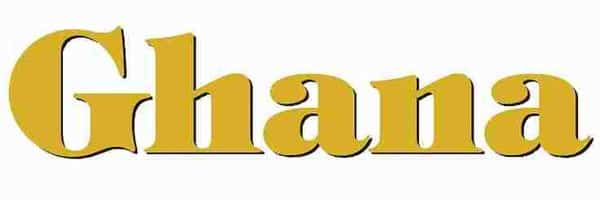
Varieties
- Ghana cacao milk chocolate
- Ghana black excellent
- Ghana excellent bite size
- Ghana black
- Ghana toppo
- Ghana mild cacao mild chocolate
- Ghana Air (Air light)
Ghana minis are also sometimes sold with other candy products in mixed marketing bags. These are a bit like the bags or boxes of mixed candies that can be purchased in the US market at Halloween time. You might see a couple of the classic Ghana flavors mixed with something like a Crunky bar when you shop for large amounts of chocolate in a single order.
Ingredients
From the Amazon entry:
- Cacao Mass
- Sugar
- Whole Milk Powder
- Soybean
- Cocoa Butter
- Sunflower Oil
- Palm Oil
- Artificial Flavor
There might be some variation in the included flavorings for some of the different products, but the base recipe is the same for all the candy bars that are made by this company.
Nutrition
| Serving Size: | 1 Bar | % Daily Value |
| Carbs | 30.5g | |
| Dietary Fiber | 0g | |
| Sugars | 0g | |
| Fat | 18.9g | |
| Saturated Fat | 0g | |
| Polyunsaturated Fat | 0g | |
| Monounsaturated Fat | 0g | |
| Trans Fat | 0g | |
| Protein | 4.1g | |
| Sodium | 34mg | |
| Potassium | 0mg | |
| Cholesterol | 0mg | |
| Vitamin A | 0% | |
| Vitamin C | 0% | |
| Calcium | 0% | |
| Iron | 0% |
- Percentages are based on a diet of 2000 calories a day.
Pictures
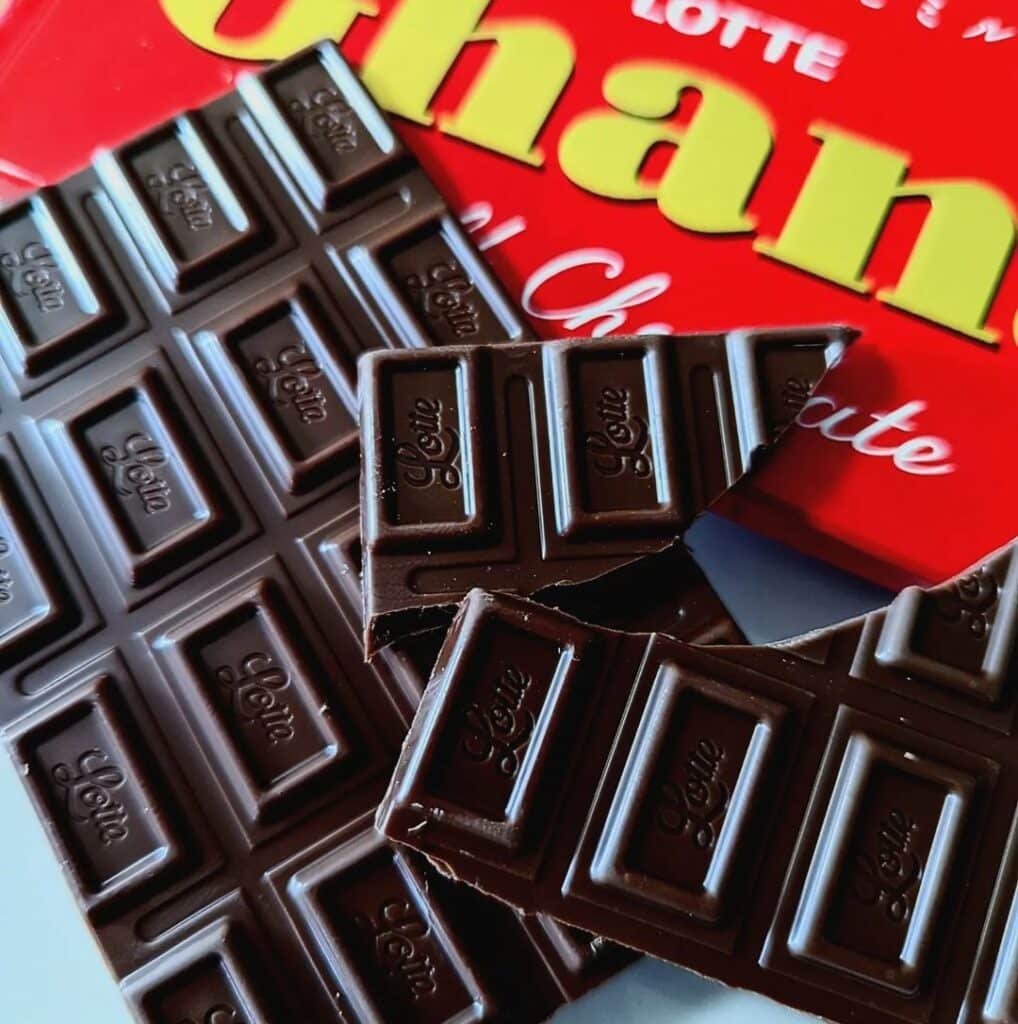
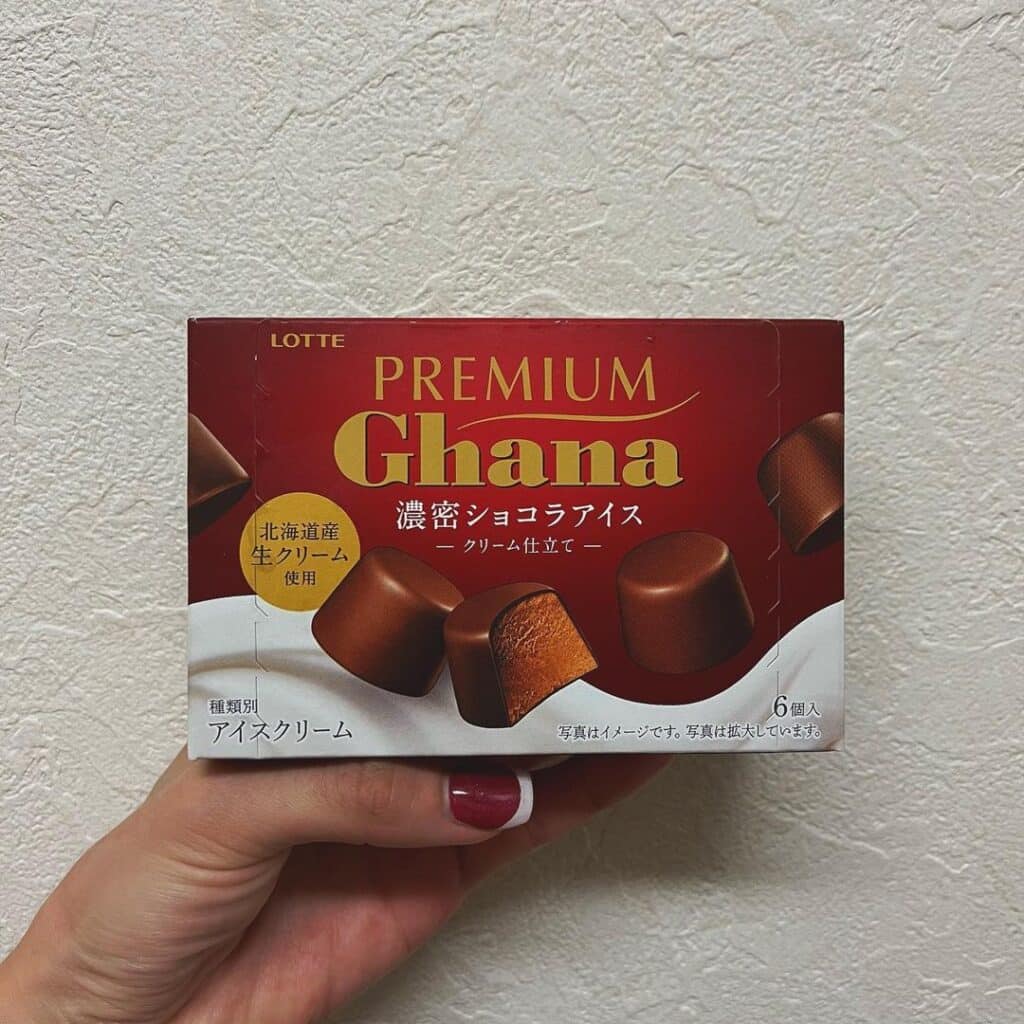
Commercials
A compilation video of ads shown in Japan for the candy:
Another compilation of ads from Japan:
A taste test for the Ghana Chocolate Bar Products:

My name is Brianna and I love writing on all topics. Candy history fascinates me and I am passionate about sharing my love of this topic with everyone else!
Please leave a review or any memories of this snack in the comments below. Thank you!
Click here for a full A-Z list of Snacks and Candy
